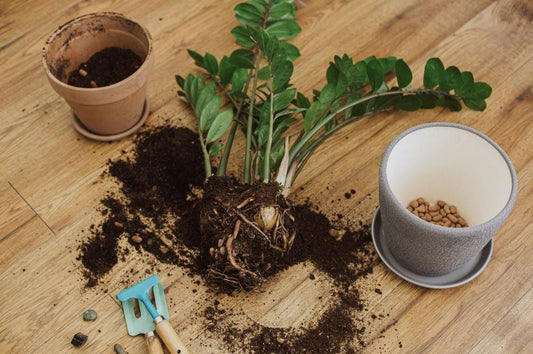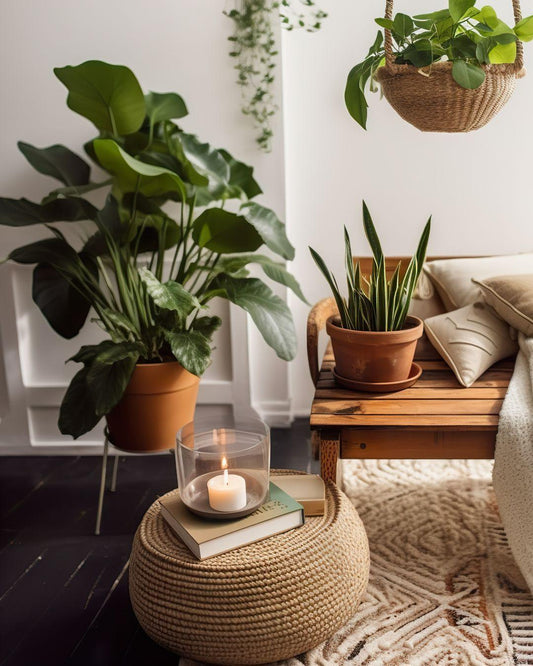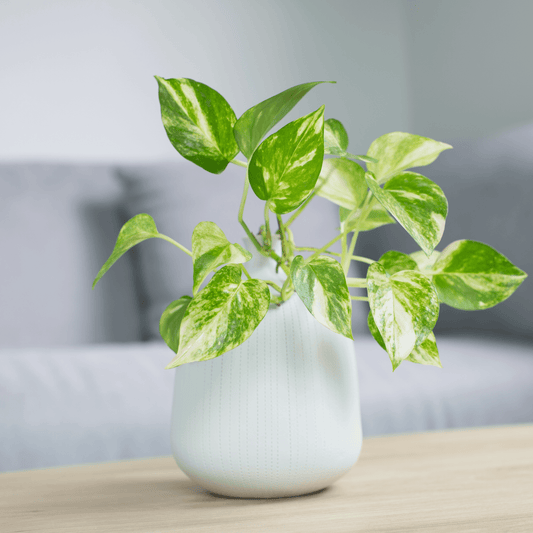What they are and how to fight them
Thrips can pose a significant threat to houseplants. Although they are not among the most common pests, they can become aggressive under certain conditions, especially in indoor cultivation.
In this article I will explain what they are, how to recognize them, the damage they cause, and the most effective methods to prevent and combat them.
 Thrips in the larval stage
Thrips in the larval stage
 Adult thrips
Adult thrips
What are Thrips?
Thrips are small parasitic insects, of the family Thysanoptera , about 1-1.5 mm long and visible to the naked eye. They feed on the sap of plants causing significant damage to our houseplants, if not eradicated in time, causing discoloration, spots and even the decay of the leaves.
Adults develop thin wings, although they prefer to walk on their legs and only fly when in danger. Larvae are much smaller, wingless, and pale in color. Thrips thrive in warm, dry environments and can reproduce up to 12 times a year, making them a difficult problem to manage.
Where are they originally from?
Thrips are found all over the world, with different species on nearly every continent. They typically thrive in warm, dry environments , conditions common in our homes, making them a threat to houseplants.
How do they get on our plants?
Thrips can get on plants in various ways: they are often transported from the outside through open windows or on newly purchased plants. They can also move from an infested plant to neighboring plants, spreading the infestation rapidly. This last risk is especially true when we introduce new plants into the house that have just been purchased.
What do Thrips do to plants?
These pests damage plants by piercing and scraping the leaves to feed on their sap. This causes silver or white spots, black dots (excrement), and deformations. They use a sort of "file" to cut and scrape the surface of the leaves, which can turn yellow, wilt or fall off in severe cases, and the lesions facilitate secondary infections.
What do plants infested by Thrips look like?

Plants attacked by Thrips show visible signs of stress:
- Discolored or silvery spots on the surface of leaves, often with streaks or dots.
- Yellow or brown leaf tips .
- Deformations and curling of leaves .
- Small black or brown scars , resembling burns, are left by thrips.
- Small black dots on the leaves , which look like dust or earth but are their excrement.

As the infestation increases, the leaves may turn completely yellow, dry up and fall off. The flowers may also be affected, showing signs of discoloration and deformation.
How to recognize thrips on plants?
Thrips are tiny insects, about 1-2 millimeters long. They are thin, rod-like, and can be yellow, brown, or black depending on the species and stage of development. Here's how to recognize them in the various stages:
Larvae : Larvae are usually yellow or whitish and are wingless. They often hide on the underside of leaves or near flower buds. At this stage, Thrips are particularly voracious and feed on the sap of plants, causing visible damage.
Adult thrips : Once adults, they develop thin, fringed wings. These adults tend to move quickly and can fly or jump from plant to plant, making it easier for the infestation to spread.
How to Defeat Thrips (Naturally)
In the past, Thrips were treated with chemical pesticides, but today these are no longer freely available products and a professional license is required to purchase them. Therefore, the public can only find natural products on sale.
Here are the most effective natural methods to control the infestation.
Neem Oil
Neem Oil is a natural repellent that is obtained from the fruits of the Neem tree (Azadirachta Indica) and contains a substance called Azadirachtin. This works by interrupting the life cycle of thrips, gradually reducing the population: with this substance the larvae can no longer grow and develop, the adults can no longer reproduce and feed. It is therefore a system that requires time and consistency. Dilute a few drops of Neem Oil in water and spray the solution on the leaves, especially on the lower part. Repeat it every 5 or 7 days, but still rely on what is recommended on the packaging of the product you buy.
Insecticide soap
Insecticidal soap is effective and safe for plants. Spray it directly on the Thrips to kill them. It is important to cover all parts of the plant, including the flower buds.
Natural predators
For those with a greenhouse or garden, Thrips can also be controlled by introducing natural predators, such as ladybugs or predatory mites, which feed on them without harming the plants.

Prevention: How to avoid infestation
Prevention is essential to avoid getting an infestation. Here are some strategies:
Inspect your plants regularly, checking the leaves often, especially the lower ones, the flower buds and the unfolding leaves.
When purchasing new plants , keep them separated for at least two weeks to ensure there are no hidden pests.
Environmental Humidity : Thrips prefer dry environments , so maintaining adequate humidity levels can help deter them.
Keep the environment clean, remove dead leaves and disinfect tools to avoid the proliferation of parasites.
Use chromotropic traps, yellow or blue traps can attract and capture thrips before they spread.
The effect of natural repellents such as Neem Oil
Neem Oil is one of the most effective natural remedies against Thrips. This oil acts as a repellent and hinders the life cycle of insects, reducing the likelihood of a massive infestation. It can be used both as a preventative, spraying it on the leaves every two weeks, and as a treatment, applying it every 5-7 days until the infestation is resolved.
I hope these tips have been helpful and I wish you success with your plants. 🌱
For more tips on how to care for your plants, follow me on Instagram , sign up for the newsletter and visit the shop to discover the plants I sell.





